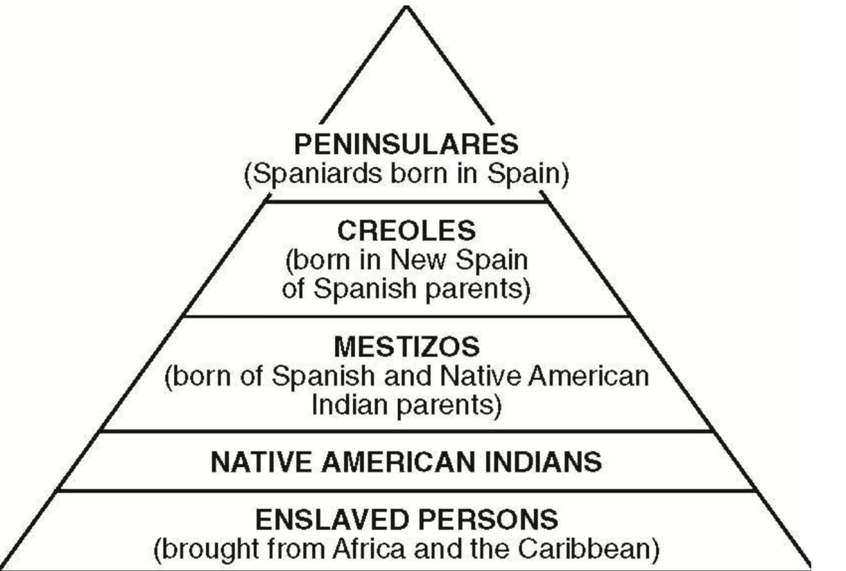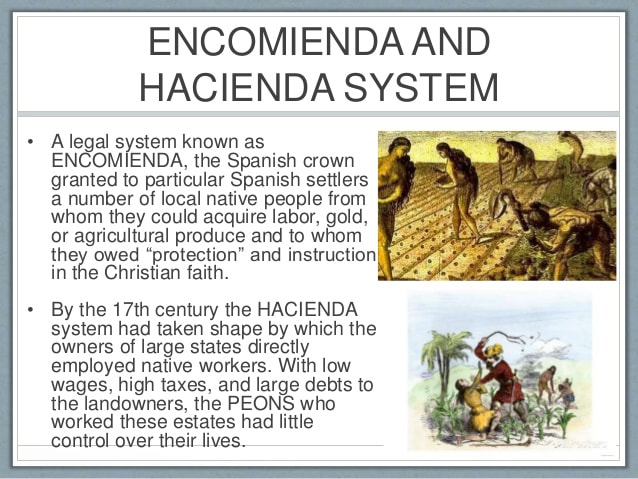labor systems in Colonial Latin America
Labor in Colonial Latin America
The economies of early Spanish colonial Latin American countries thrived under three different kinds of labor systems: the Encomienda System, Repartimiento de Labor, and the Hacienda System.
The economies of early Spanish colonial Latin American countries thrived under three different kinds of labor systems: the Encomienda System, Repartimiento de Labor, and the Hacienda System.
Adapted from articles in the Encyclopaedia Britannica
By 1795, the Spanish crown had institutionalized the purchase of whiteness through a process called the gracias al sacar. An elite cohort of pardos and mulattos could apply and pay for a decree that converted them to whites. In 1796, merchant Julian Valenzuela bought a decree from the king and Council of the Indies that “dispensed” his status as a “pardo.” You can read more here: https://notevenpast.org/purchasing-whiteness-race-and-status-in-colonial-latin-america/


